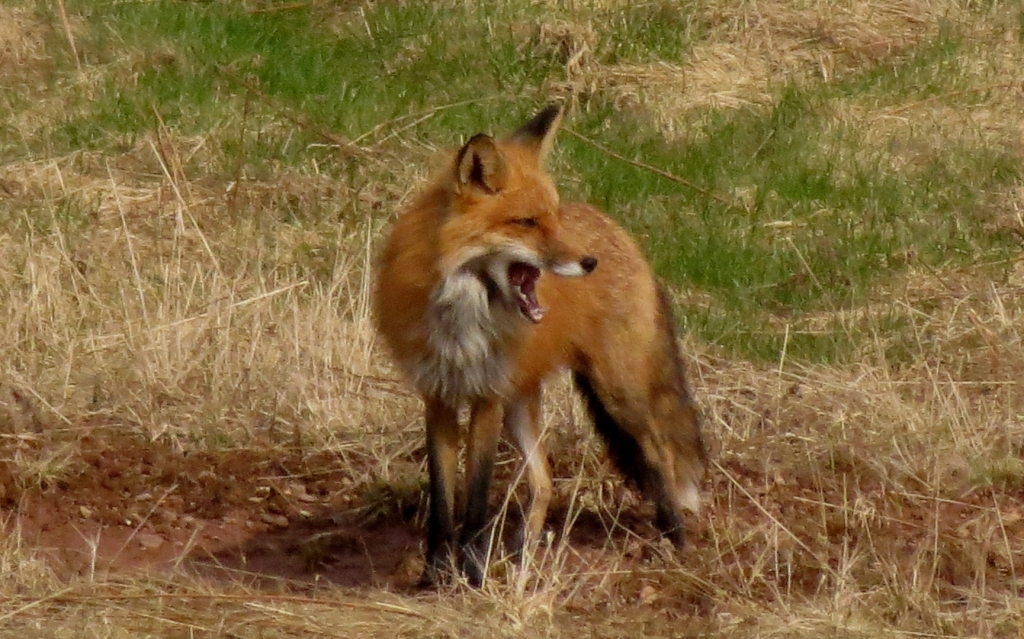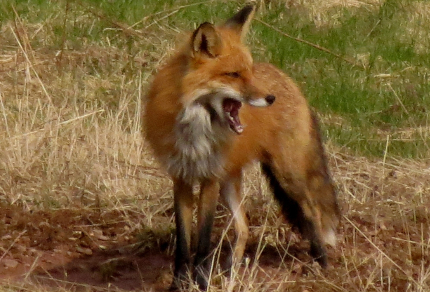There is a simple answer to the question of what caused so many Australian mammals to go extinct. People. More specifically, it was hunting by people and by three non-native carnivores that humans introduced to this continent – the dingo, the red fox, and the house cat.
In his book, Australia’s Mammal Extinctions: A 50 000 year history, Chris Johnson paints a picture of 3 waves of extinctions that occurred during distinct time periods. Prior to these waves of extinction, Australia was inhabited by at least 340 species of terrestrial mammals, of which 67 are now known to be extinct.1
The first wave of extinctions occurred during the last ice age, which ended around 10,000 years ago. This wave is called the Pleistocene megafauna extinction, the term ‘Pleistocene’ referring to the palaeontological time period, and ‘megafauna’ referring to the fact that the animals that disappeared were generally very large, weighing more than 40 kilograms. With the exception of two echidnas, all of the more than 50 species of mammals that went extinct were marsupials. They lived a variety of lifestyles – omnivores, carnivores, scavengers, anteaters, and herbivores that grazed or browsed on vegetation. They included giant wombats, kangaroos, ‘marsupial tapirs,’ a large koala, rat-kangaroos, a ‘marsupial lion’ with massive, crushing jaws, and many species of short-faced kangaroos that fed primarily by browsing on the twigs and leaves of shrubs and trees. All were ground dwellers inhabiting open habitats, and all reproduced slowly.2
The fact that the Pleistocene megafauna were big and easily accessible made them extremely vulnerable to hunting by Aboriginals, who first arrived in Australia more than 40,000 years ago. The fact that they reproduced slowly meant they couldn’t recover from heavy hunting pressure. Thus, they went extinct, and through their passing, the vegetation of the continent changed due to the removal of major herbivores, particularly browsers.3
The second wave of extinctions occurred between 10,000 and 200 years ago, and is called the Holocene extinction, again referring to the time period. During this extinction, the two remaining large marsupial carnivores, the Tasmanian tiger or thylacine and Tasmanian devil became extinct on the mainland, and many species of other Australian mammals dropped drastically in numbers.4
The environment again changed during this second extinction wave, this time due to the Aboriginals’ use of fire as a hunting tool and a means of managing the vegetation to meet their needs. Also during this period, another significant ecological event occurred – the introduction of the dingo by Aboriginals, which occurred about 4,000 years ago. One theory (advanced by Corbett in 1995) for the extinction of the devil and thylacine on the mainland focuses on the out-competition of these native species by dingoes. Chris Johnson, however, proposed in his book that it was hunting by humans that caused those extinctions, although the presence of a new and larger carnivore on the scene undoubtedly put pressure on populations of both thylacines and devils. So, again, it was the influence of people, who had become the dominant predators on the land, that created this second wave of mammal extinctions.5
The third wave of extinctions occurred during the past 200 years and is called the European era, since it coincided with the arrival and settlement of this far southern continent by Europeans. During this wave, the mammals that disappeared were overwhelmingly larger rodents and medium-sized marsupials that fell into a weight range of 35 grams to 5.5 kilograms. They inhabited arid regions of the country, particularly southern parts of the mainland, and were all ground-dwellers. Several were species of hopping-mouse or wallaby, but others that disappeared included bandicoots and a bilby. The extinctions had a distinct directional spread, from south to north and east to west, which from what I understand, more or less mimics the pattern of settlement of the country. It was during this wave of extinctions that the thylacine, a large marsupial carnivore weighing up to 35 kilograms, disappeared from Tasmania. It hasn’t been seen alive since the 1930’s and is presumed extinct.6

Red Fox (© Magi Nams)
The Europeans brought European mammals with them – the countless sheep, the other hoofed animals such as goats and camels, horses and donkeys that became feral herbivores, the rabbits and hares short-sightedly introduced for sport hunting, and most importantly from the perspective of the ecology of native mammals, the red fox (another sport hunting mistake) and the house cat. Although the many introduced herbivores destroyed native habitats and competed with native herbivores for foods (which they continue to do today), the foxes and feral cats – both highly adaptable and efficient predators of rodents and other medium-sized prey – hunted and killed native animals, driving 8 species of rodents and 9 species of marsupials to extinction. These two introduced predators still wreak havoc with small mammal populations today. The thylacine was hunted to extinction by Europeans who didn’t realize that the dogs they’d brought with them, many of which became feral and reproduced in the wild, killed more sheep than thylacines did.7
So, the three waves of extinction were all caused by humans, either through direct hunting pressure, or though predation on native mammals by highly efficient predators brought to this country by humans. In his book, Chris Johnson stated that even now, almost a quarter of Australia’s marsupials are threatened with extinction.8 In an ABC radio documentary about the new roles of zoos, David Taggart, principal scientist at the Adelaide Zoo and researcher at the University of Adelaide, commented that, while in other countries, endangered mammals such as giant pandas are described in terms of thousands of remaining individuals, in Australia, endangered mammals are described in terms of tens of remaining individuals.9 Some of this country’s native mammals truly have their backs against the wall.
References:
1. Chris Johnson. Australia’s Mammal Extinctions: A 50 000 year history. 2006. Cambridge University Press, Cambridge. p. 2-3; 2. Ibid, pp. 3, 18-20, 33, 112-113; 3. Ibid, pp. 61, 112-114, 132; 4. Ibid, pp. 3, 162; 5. Ibid, pp. 146-149, 157, 162, 166; 6. Ibid, pp. 168-172; 7. Ibid, pp.3, 159,197-211; 8. Ibid, p. 3.
9. ABC Radio National, The Science Show. The point of zoos – Part 1. Adelaide Zoo. Saturday, February 13, 2010.


